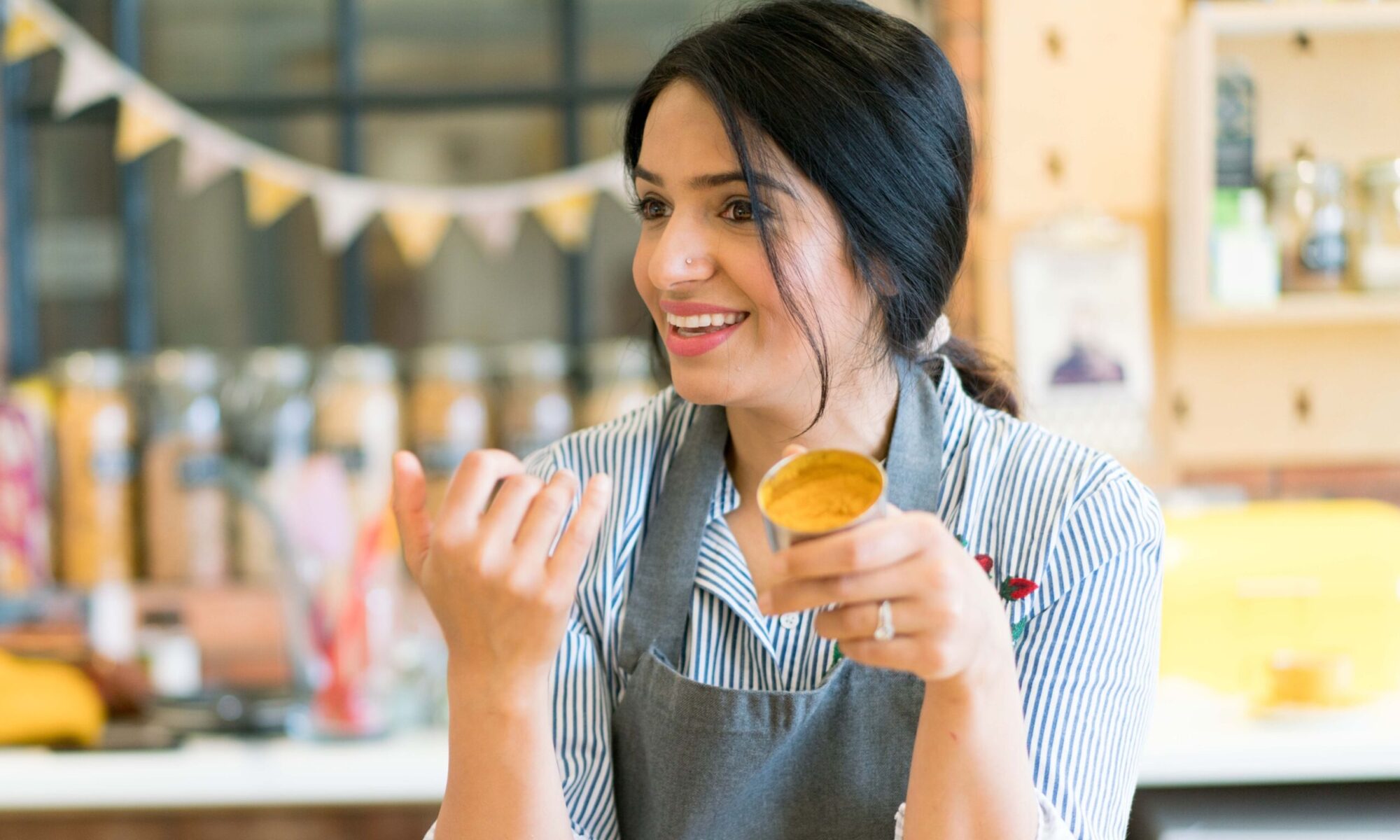Butter Chicken – the celebratory, spice laced comfort dish that satisfies every single time. It’s quite possibly the most famous and popular Indian dish too. The ultimate Butter Chicken requires a perfect balance of creaminess, sweetness & heat. All levels need to sing together harmoniously to create a decadent dish that you want to stick your face in.

So this wasn’t a “passed down” recipe, it’s one I’ve spent a little time perfecting in my own kitchen. After much tweaking, recipe developing and eating, (I’d like to think) I’m now onto a winner!
Interestingly Butter Chicken is not a “home-style” dish – it was created relatively recently (in the 1970’s) in a restaurant in New Delhi as a way or dressing up unsold tandoori chicken. It was an instant hit and over time became the dish most synonymous with Indian food all over the world.

If you missed the live cookery class of me teaching this, but want to catch up and watch, you can do so by clicking here. Also, if you have any dish suggestions for the next class which will be on 24th July, comment below or drop me a message on Instagram or Facebook. I would love to hear from you. In the meantime, happy cooking! x

Butter Chicken
Equipment
- Food processor (optional)
- Pestle & Mortar (optional)
- Heavy bottom pan
Ingredients
For the Chicken Marinade:
- 500 g skinless, boneless chicken thighs cut into small pieces
- 2 tbsp yoghurt
- Juice of 1/4 lime/lemon
- 2 cloves garlic grated
- 2" ginger grated
- 3/4 tsp Kashmiri chilli powder/mild paprika
- 1/2 tsp garam masala
- 1/4 tsp turmeric
- 1 tsp salt
- 2 tbsp oil
For the Butter Masala:
- 1 good tbsp butter
- 3 cloves optional
- 4 green cardamoms optional
- 3 cms cinnamon stick/cassia bark optional
- 1/4 tsp nutmeg powder optional
- 2 onions (approx 175g) finely diced
- 1 tsp salt
- 3 garlic cloves grated
- 3" ginger grated
- 8 tbsp tomato passata/blitzed plum tomatoes
- 1 tbsp double concentrate tomato puree
- 2 bird eye chillies 1 finely chopped & 1 halved vertically
- 12 cashews soaked in hot water for 10 minutes, made into a thick smooth paste (using a food processor)
- 1 tsp garam masala
- 1 tsp coriander powder
- 1/4 tsp Kashmiri chilli powder/mild paprika
- 1/4 tsp turmeric
- 1/2 tsp salt or according to taste
- 2 tsp sugar
- 3 tbsp double (heavy) cream
- 3 good pinches kasuri methi/sun-dried fenugreek leaves
To Finish:
- 1 black cardamom crushed into a powder (optional)
- Juice of 1/4 lime
- Handful fresh coriander finely chopped
Instructions
- Turn your grill on at the maximum temperature. Place all "marinade" ingredients into a bowl and mix together. Ideally allow to marinade or 2-3 hours (overnight is best). Then, place the marinated chicken on a foil lined oven tray. Grill for 10-12 minutes or until just fully cooked (the chicken should be white all the way through with a slight char all over). Remove from grill and keep aside.
- In a pan, heat the butter and allow to melt. Using a pestle & mortar, coarsely crush open the cloves and green cardamoms and add to the pan along with the nutmeg powder and cinnamon. Then, add the onion along with 1 tsp salt. Cook on a medium heat for 3-4 minutes until soft and translucent.
- Now add the garlic and ginger and mix. Cook for 3-4 minutes until light golden in colour. Add the chillies and mix. Then gradually add the tomato passata and tomato puree. Now add the creamy cashew paste and mix well. Continue to cook for 3-4 minutes on a low/medium heat.
- Add in half of the fresh coriander now. Then add the garam masala, coriander powder, Kashmiri chilli powder/paprika, turmeric, salt and sugar mix well. Add in 5-6 tbsp water and allow the spices to cook for 1-2 minutes. Now grind the the kasuri methi into a powder using your fingers and then add to the pan and mix.
- Now add the cream and mix well. When you see the oil begin to separate from the masala paste, at the edges, add the grilled chicken as well as any juices on your grill tray.
- Add ¼ cup (60ml) water and bring to boil (I like to deglaze the grill tray with water and use that for maximum flavour). Pop a lid on the pan and allow the chicken to absorb the flavour of the masala for 3-5 minutes on a medium heat.
- Finish with black cardamom powder, lime and fresh coriander. Allow the butter chicken to rest for 5-10 minutes before digging in. Serve with steamed basmati rice or hot and fresh naans!












